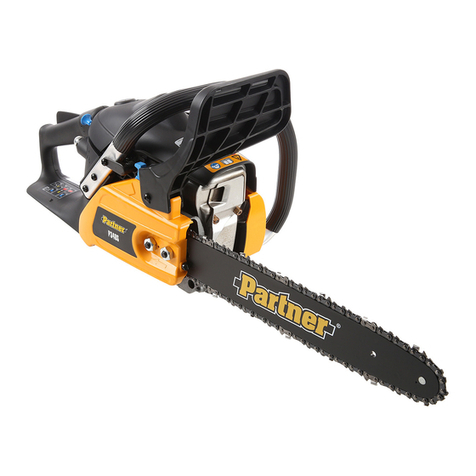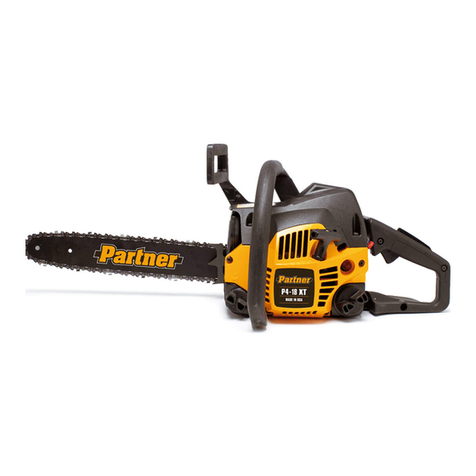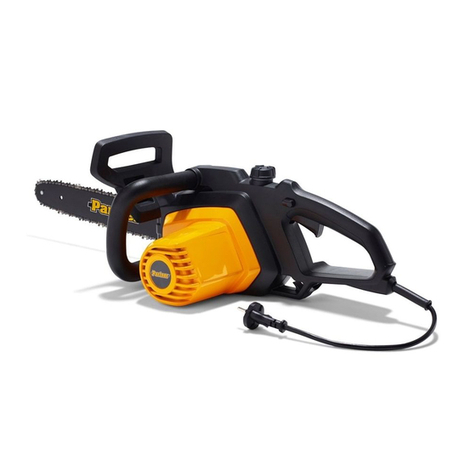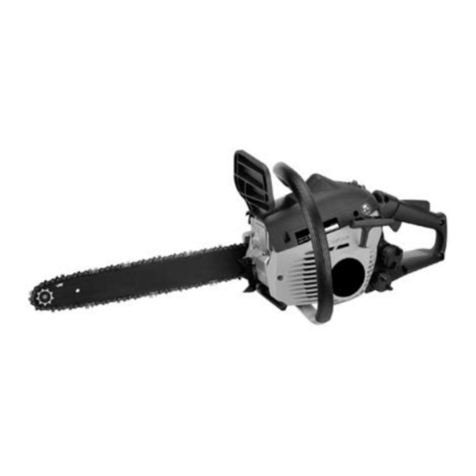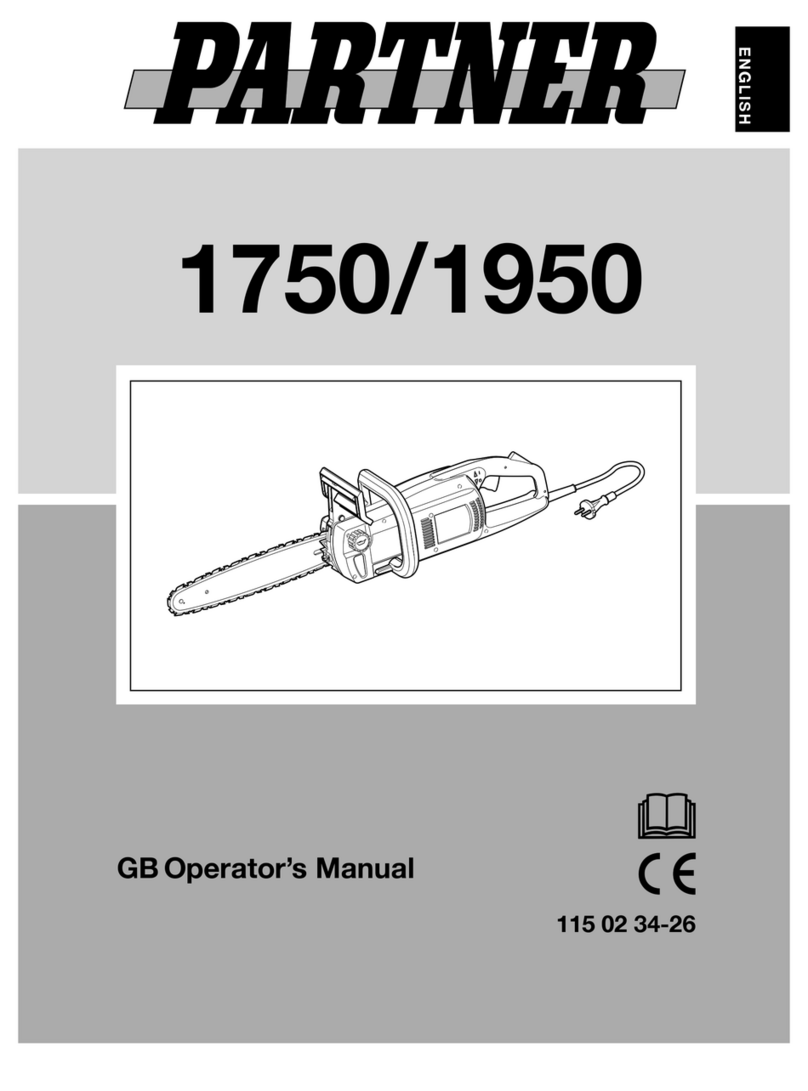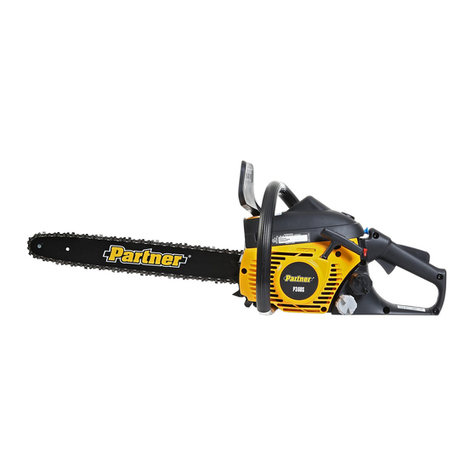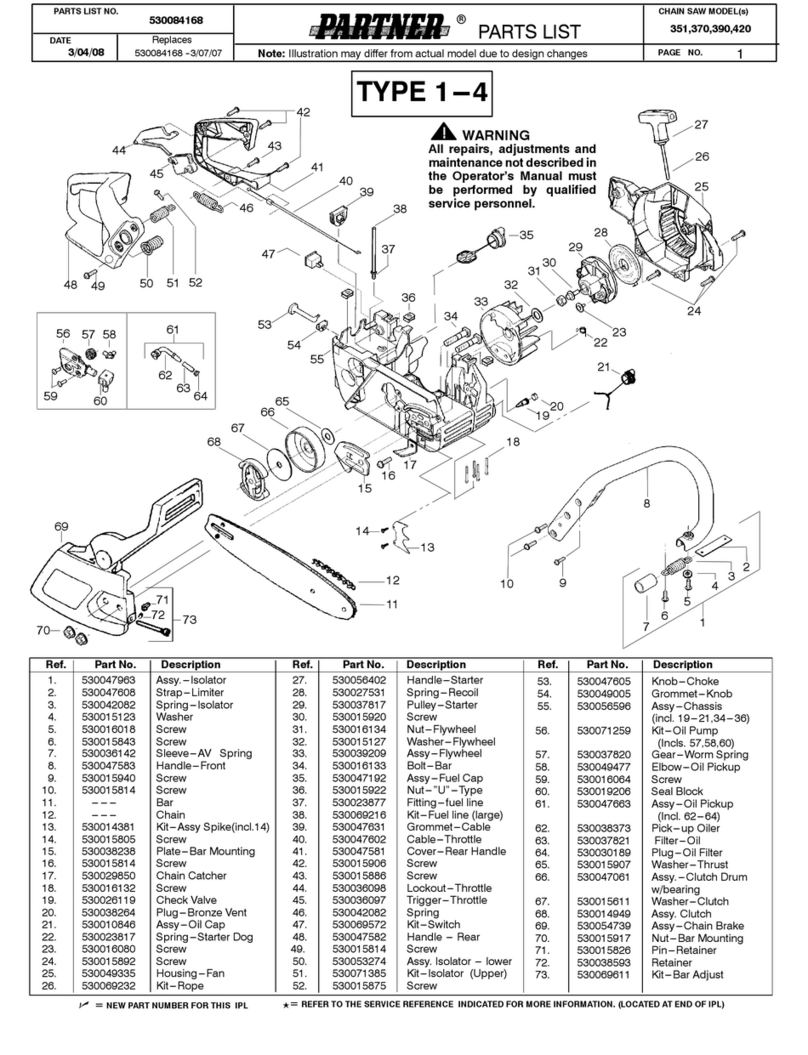4
SDo not operate a chain saw that is dam-
aged, improperly adjusted, or not com-
pletely and securely assembled. Always
replace bar, chain, hand guard, or chain
brake immediately if it becomes damaged,
broken or is otherwise removed.
SWith the engine stopped, hand carry the
chain saw with the muffler away from your
body, and the guide bar and chain to the
rear, preferably covered with a scabbard.
MAINTAIN YOUR SAW IN GOOD
WORKING ORDER
SHave all chain saw service performed by a
qualified service dealer with the exception of
the items listed in the maintenance section of
this manual. For example, if improper tools
are used to remove or hold the flywheel
when servicing the clutch, structural damage
to the flywheel can occur and cause the fly-
wheel to burst.
SMake certain the saw chain stops moving
when the throttle trigger is released. For
correction, refer to CARBURETOR AD-
JUSTMENTS.
SNever modify your saw in any way. Use
only attachments supplied or specifically
recommended by the manufacturer.
SKeep the handles dry, clean, and free of oil
or fuel mixture.
SKeep fuel and oil caps, screws, and fas-
teners securely tightened.
SUse only PartnerRaccessories and re-
placement parts as recommended.
HANDLE FUEL WITH CAUTION
SDo not smoke while handling fuel or while
operating the saw.
SEliminate all sources of sparks or flame in
the areas where fuel is mixed or poured.
There should be no smoking, open flames,
or work that could cause sparks. Allow en-
gine to cool before refueling.
SMix and pour fuel in an outdoor area on bare
ground; store fuel in a cool, dry, well venti-
lated place; and use an approved, marked
container for all fuel purposes. Wipe up all
fuel spills before starting saw.
SMove at least 10 feet (3 meters) from fuel-
ing site before starting engine.
STurn the engine off and let saw cool in a
non-combustible area, not on dry leaves,
straw, paper, etc. Slowly remove fuel cap
and refuel unit.
SStore the unit and fuel in an area where fuel
vapors cannot reach sparks or open
flames from water heaters, electric motors
or switches, furnaces, etc.
KICKBACK
WARNING:Avoid kickback which
can result in serious injury. Kickback is the
backward, upward or sudden forward motion
of the guide bar occurring when the saw
chain near the upper tip of the guide barcon-
tacts any object such as a log or branch, or
when the wood closes in and pinches the
saw chain in the cut. Contacting a foreign ob-
ject in the wood can also result in loss of
chain saw control.
SRotational Kickback can occur when the
moving chain contacts an object at the up-
per tip of the guide bar. This contact can
cause the chain to dig into the object,
which stops the chain for an instant. The
result is a lightning fast, reverse reaction
which kicks the guide bar up and back to-
ward the operator.
SPinch-Kickback can occur when the the
wood closes in and pinches the moving
saw chain in the cut along the top of the
guide bar and the saw chain is suddenly
stopped. This sudden stopping of the
chain results in a reversal of the chain
force used to cut wood and causes the
saw to move in the opposite direction of the
chain rotation. The saw is driven straight
back toward the operator.
SPull-In can occur when the moving chain
contacts a foreign object in the wood in the
cut along the bottom of the guide bar and the
saw chain is suddenly stopped. This sudden
stopping pulls the saw forward and away
from the operator and could easily cause the
operator to lose control of the saw.
Avoid Pinch--Kickback:
SBe extremely aware of situations or obstruc-
tions that can cause material to pinch the top
of or otherwise stop the chain.
SDo not cut more than one log at a time.
SDo not twist the saw as the bar is with-
drawn from an undercut when bucking.
Avoid Pull--In:
SAlways begin cutting with the engine at full
speed and the saw housing against wood.
SUse wedges made of plastic or wood.
Never use metal to hold the cut open.
Kickback Path
Avoid Obstructions
Clear The
Working Area
REDUCETHECHANCEOF
KICKBACK
SRecognize that kickback can happen.
With a basic understanding of kickback,
you can reduce the element of surprise
which contributes to accidents.
SNever let the moving chain contact any ob-
ject at the tip of the guide bar.
SKeep the working area free from obstruc-
tions such as other trees, branches, rocks,
fences, stumps, etc. Eliminate or avoid any
obstruction that your saw chain could hit
while you are cutting through a particular log
or branch.
SKeep your saw chain sharp and properly
tensioned. A loose or dull chain can increase
the chance of kickback occurring. Follow
manufacturer’s chain sharpening and main-
tenance instructions. Check tension at regu-


